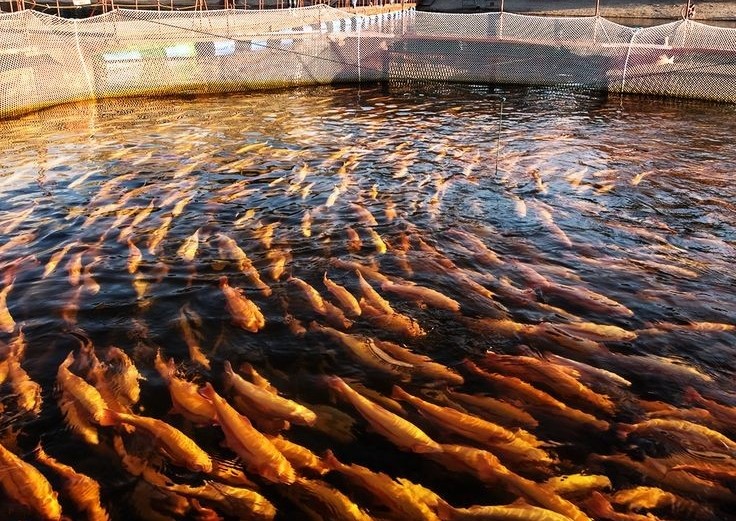



As a selective oxidant, chlorine dioxide reacts with organic substances and helps to remove pathogens from water thereby making it a preferred environment for fish togrow and breed in. The fish breeding in such clear watersturns out to be high in nutrients offering myriad health benefits.
The best part of using chlorine dioxide is the limiteddosage/quantity needed to eliminate bacteria and otherpathogens. For instance, dosing the compound at 0.02 to 0.5 PPM in 1000 liters can help treat around 10 million gallons of water. This is arguably the least end-user cost of the chemical compound per gallon.

How does Chlorine Dioxide Help to Boost Fish Production?
It is common knowledge that healthy fish grows in clean water bodies and delivers a rich yield for fish farmers. There are plenty of fish species and other aquatic life that abound in rivers and lakes. These include trout, commercial salmon, tilapia, mussels, mollusks, shellfish, clams, prawns, shrimp, crustaceans, crayfish, crabs, and lobsters. So, the cleaner the water, the better is the output for commercial fish farming operations. However, effluents released from industries and municipalities can add toxic chemicals to the water bodies and pollute them. These effluents also contain dangerous pathogens, which can lead to severe illnesses when they get into the human body through consumption of fish and other aquatic life forms.
As a selective oxidant, chlorine dioxide reacts with organic substances and helps to remove pathogens from water thereby making it usable and fit for human consumption. The fish breeding in such clear waters turns out to be high in nutrients offering myriad health benefits. One of the major benefits of using chlorine dioxide in the breeding of fish colonies over other types of oxidants, namely, ozone, chlorine, and hydrogen peroxide, is its reduced oxidation power combined with a high oxidation capacity.

Chlorine Dioxide can also be used for the following applications :
1. Cleaning of fishing boats and other equipment.
2.To disinfect transport water while live fish transportation.
3.For dipping de-scaled and gutted fish/shrimp.
4.In spray/dipping fish, shrimp and prawns.
Copyright 2019 All Right Reserved By| Design by @vinay